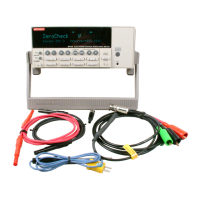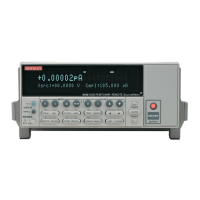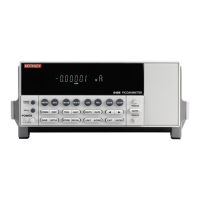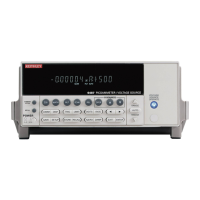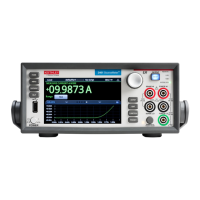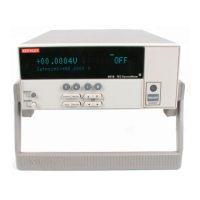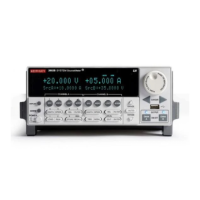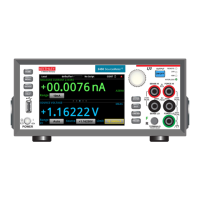F-6 IEEE-488 Bus Overview
Handshake lines
The bus handshake lines operate in an interlocked sequence. This method ensures reliable
data transmission regardless of the transfer rate. Generally, data transfer will occur at a rate
determined by the slowest active device on the bus.
One of the three handshake lines is controlled by the source (the talker sending information),
while the remaining two lines are controlled by accepting devices (the listener or listeners
receiving the information). The three handshake lines are:
DAV (DATA VALID) — The source controls the state of the DAV line to indicate to any lis-
tening devices whether or not data bus information is valid.
NRFD (Not Ready For Data) — The acceptor controls the state of NRFD. It is used to signal
to the transmitting device to hold off the byte transfer sequence until the accepting device is
ready.
NDAC (Not Data Accepted) — NDAC is also controlled by the accepting device. The state
of NDAC tells the source whether or not the device has accepted the data byte.
The complete handshake sequence for one data byte is shown in Figure F-2. Once data is
placed on the data lines, the source checks to see that NRFD is high, indicating that all active
devices are ready. At the same time, NDAC should be low from the previous byte transfer. If
these conditions are not met, the source must wait until NDAC and NRFD have the correct sta-
tus. If the source is a controller, NRFD and NDAC must be stable for at least 100ns after ATN
is set true. Because of the possibility of a bus hang up, many controllers have time-out routines
that display messages in case the transfer sequence stops for any reason.
Once all NDAC and NRFD are properly set, the source sets DAV low, indicating to accepting
devices that the byte on the data lines is now valid. NRFD will then go low, and NDAC will go
high once all devices have accepted the data. Each device will release NDAC at its own rate, but
NDAC will not be released to go high until all devices have accepted the data byte.
The previous sequence is used to transfer both data, talk and listen addresses, as well as mul-
tiline commands. The state of the ATN line determines whether the data bus contains data,
addresses, or commands as described in the following paragraphs.
DATA
DAV
SOURCE
SOURCE
VALID
NRFD
NDAC
ACCEPTOR
ACCEPTOR
ALL READY
ALL ACCEPTED
Figure F-2
IEEE-488 hand-
shake sequence

